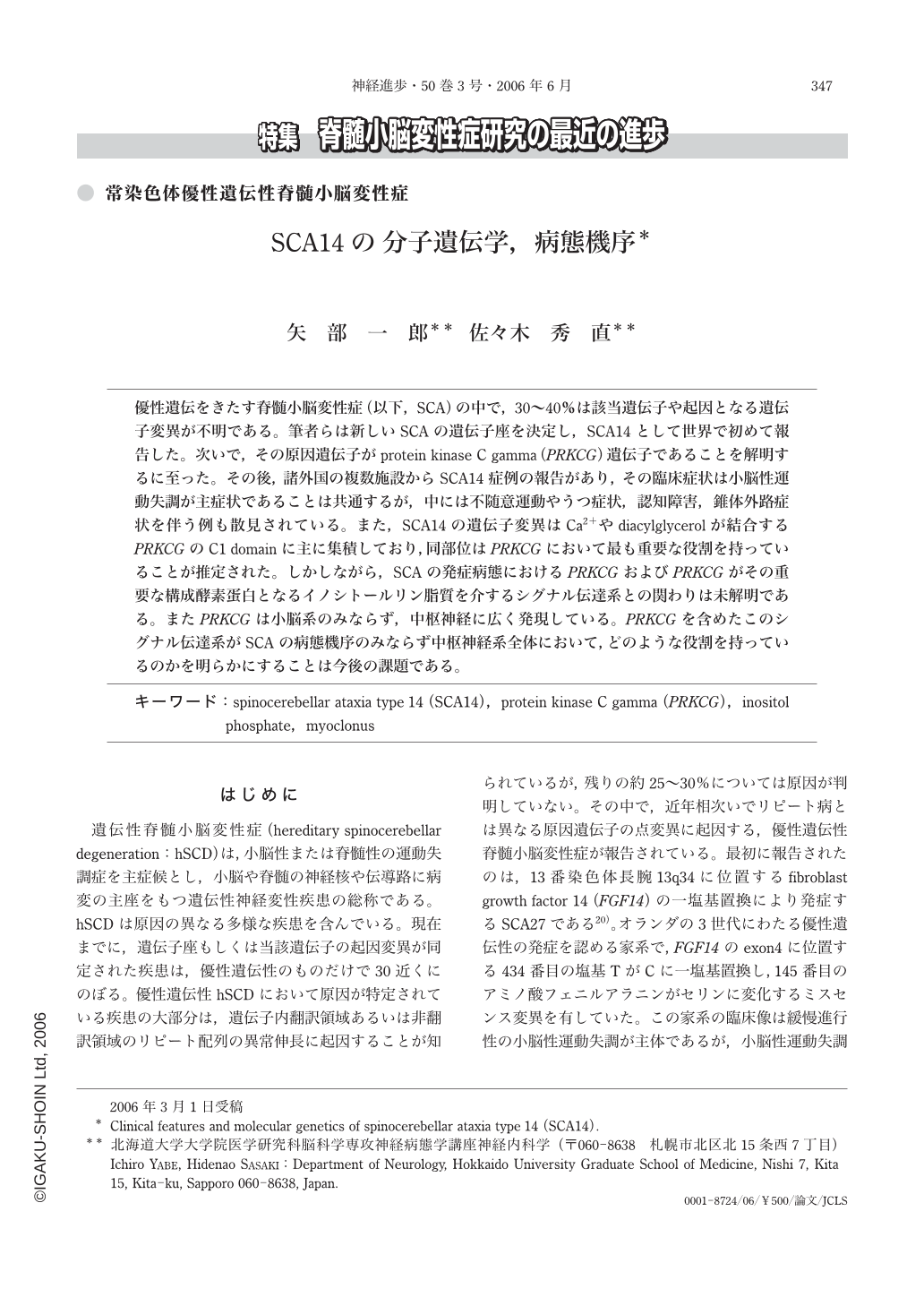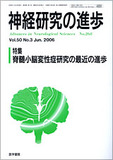Japanese
English
- 有料閲覧
- Abstract 文献概要
- 1ページ目 Look Inside
- 参考文献 Reference
優性遺伝をきたす脊髄小脳変性症(以下,SCA)の中で,30~40%は該当遺伝子や起因となる遺伝子変異が不明である。筆者らは新しいSCAの遺伝子座を決定し,SCA14として世界で初めて報告した。次いで,その原因遺伝子がprotein kinase C gamma(PRKCG)遺伝子であることを解明するに至った。その後,諸外国の複数施設からSCA14症例の報告があり,その臨床症状は小脳性運動失調が主症状であることは共通するが,中には不随意運動やうつ症状,認知障害,錐体外路症状を伴う例も散見されている。また,SCA14の遺伝子変異はCa2+やdiacylglycerolが結合するPRKCGのC1 domainに主に集積しており,同部位はPRKCGにおいて最も重要な役割を持っていることが推定された。しかしながら,SCAの発症病態におけるPRKCGおよびPRKCGがその重要な構成酵素蛋白となるイノシトールリン脂質を介するシグナル伝達系との関わりは未解明である。またPRKCGは小脳系のみならず,中枢神経に広く発現している。PRKCGを含めたこのシグナル伝達系がSCAの病態機序のみならず中枢神経系全体において,どのような役割を持っているのかを明らかにすることは今後の課題である。
About 30% of hereditary spinocerebellar degeneration is still of unknown etiology. We previously identified spinocerebellar ataxia type 14(SCA14)in a single Japanese family with an autosomal dominant neurodegenerative condition characterized by cerebellar ataxia and intermittent axial myoclonus. Subsequently, we showed that this condition was caused by mutation of the protein kinase C gamma(PRKCG)gene. To date, 19 SCA14 families have been reported in various countries. Although involuntary movements, cognitive dysfunction, depression, and extrapyramidal signs were seen in some of these patients, cerebellar ataxia was the predominant symptom. Mutations causing SCA14 were mainly concentrated in the C1 regulatory domain of PRKCG, where Ca2+ and diacylglycerol interact. However, the function of the inositol phosphate and PRKCG signaling systems, as well as the molecular mechanisms of SCA14, are not well understood, especially since PRKCG is not only expressed in the cerebellum but is also found in various other parts of the central nervous system. Further studies are needed to clarify the role of this signaling system in the central nervous system.

Copyright © 2006, Igaku-Shoin Ltd. All rights reserved.


